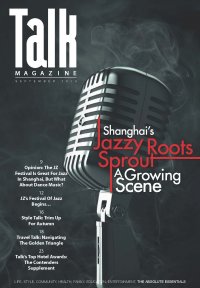Purring Along
For a long time, Jaguar produced saloons that, while very British, were, to put it bluntly, boring – the type that might appeal to your aging uncle. However, the Jaguar XF, in a make or break moment, threw caution to the wind and produced a car that was cutting edge with those classic British characteristics.

Despite its sports saloon looks, in China the Jaguar XF does not sell as well as the more staid German competition. Partly, this is due to it being import only and also, until recently, the lack of a small petrol engine hindered sales. In recent years, the Chinese luxury market has moved away from the large V6 and V8 engines that powered the Jaguar, and started to favor smaller turbo charged petrol engines. This all changed last year however with the introduction of a 2.0 liter turbo unit.
And it was this engine we were expecting in our test car, but it seems that this version is so popular, Jaguar was unable to supply us with one. Our car, resplendent in red, was supplied with the now top of the range 3.0l V6 unit. With its leaping Jaguar motif, this big cat cuts an entrance.
Jaguar offers a level of interior customization unrivalled by any of the locally made German competition. There is, in our top of the range Portfolio model, a choice of ten combinations of leather and headlining along with seven veneers, which match knurled aluminum with various woods or carbon fiber trims.

Equipment levels are comprehensive. Although the touch screen infotainment system can be switched to English, the GPS remains in Chinese. The driver and front passenger sit low with the dashboard and instrumentation wrapping around them. The level of luxury is impressive with the top of the dash swathed in leather and, in our version at least, the roof lined with suede like cloth.
The Jaguar is leveled squarely as a driver’s car. In the rear seats, thanks to the sloping roofline, taller passengers will have problems. While legroom is adequate, it is considerably less than with stretched cars for China such as the Audi A6L and BMW 5 series. Further limiting its appeal to Chinese consumers is the lack of cosseting for rear passengers who only get rear air vents and a power supply.
Starting the car is sheer theatre, air vents rotate open and the gear selector dial rises out of the central console. Under normal driving conditions the V6 engine proves remarkably restrained despite all the power on tap. Even slipping the gear selector to S and using the paddle shifts does little to excite. It seems the key lies in the chequered flag symbol button located on the central console. Press that and the 8-speed gearbox holds down, shifts and the accelerator responses stiffen giving rise to a throaty six-cylinder roar.
On the road this cat lands on all fours and holds its poise. There is nothing artificial feeling about the steering here – turn the wheel and the car obliges by going exactly where you expect it too. Despite the sports bias of this car, it does a remarkably good job of soaking up the bumps of Chinese road surfaces.
Jaguar Land Rover should start producing cars in China next year. As yet, there is no word as to whether the XF will be one of the models. Currently, due to it being imported, the Jaguar XF is more expensive than the competition and with no stretched version, shorter too. Prices start at RMB 550,000 for the Luxury 2.0T and rise to RMB 768,000 for the Portfolio trim 3.0l V6.

